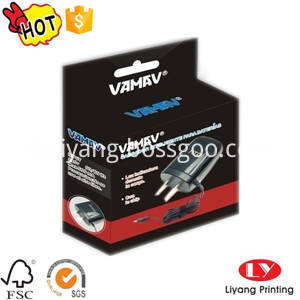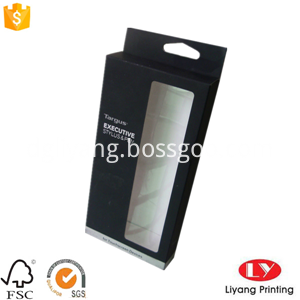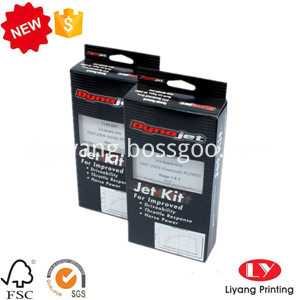Print quality includes the reproducibility of the original and the stability of the quality. Print quality is the comprehensive effect of various appearance characteristics of printed matter, mainly divided into image quality and text quality. The image quality characteristic parameters can be divided into fault patterns and surface characteristics such as tone and color reproduction, image resolution, and moire. The definition of the best text quality is very clear, they must be free of the following physical defects: ink blocking, broken characters, white spots, unclear edges, excess ink marks, etc. This article mainly explains from the aspects of printing quality related factors and printing quality parameters.
1. Factors related to printing quality
In print production, the factors that may have an impact on the quality of printed matter can be grouped into three main categories. That is aesthetic factors, technical factors, consistency factors.
1. Aesthetic factors
Because printed matter is in the end a visual product, when people evaluate the quality of printed matter, the first impression is the aesthetic effect of the printed matter.
The aesthetic effect of the printed matter is mainly related to the design level of the craftsmen. The choice of font, color design, art pattern, image position, layout style, etc. during design are all related to the aesthetic effect of the printed matter. Good design can make the printed matter show good aesthetic characteristics, but it is difficult to describe the quality of the design in quantity. Sometimes, "good" design actually does not conform to the rules of typesetting, color combination, image synthesis and so on. Designs that are considered bad by some people may sometimes be suitable for use on the covers of certain commemorative albums, but they are inappropriate for advertisements of high-grade cosmetics. It can be seen that the aesthetic factors of print quality are actually the embodiment of designers' imagination and creativity. An excellent designer should be familiar with the aesthetic design criteria, and should be aware of the technical constraints in the printing materials, inks, and printing processes, so that the printed products can produce excellent aesthetic effects.
2. Technical factors
The technical characteristics of print quality include image clarity, color and gradation reproduction degree, glossiness and texture. Among these characteristic factors, some can be expressed by quantity, such as color and tone reproduction. In each process of the replication process, people can control these factors; there are some technical factors that cannot be expressed in quantity, but can be described in language. For example: in order to obtain the best print quality, the possibility of moire must be minimized, which is the form described in language; there are some that vary according to different uses. For example, gloss characteristics, in order to improve the legibility of text prints, you need to use low-gloss paper, but in order to obtain the best contrast in the reproduction of photographic originals, you need to use high-gloss paper.
â‘ Color and tone reproduction.
The tone and the degree of color reproduction refer to the degree of conformity of the color appearance and tone balance of the screen with the original. For black-and-white photos and black-and-white reproductions, the density value is usually used to indicate the degree of tone reproduction; for color reproductions, hue, saturation, and lightness are more practical, and these can be measured with a colorimeter Value. Because the reproduction quality of the black and white tone is limited by the maximum density of black ink that can be transferred to the paper, the tone reproduction quality of the three primary colors is limited by the combined density of the four ink colors of yellow, magenta, cyan and black. Therefore, printing The copy cannot have the same density range as the original. For example, the density range of black-and-white photo originals is 0–2.00, however, the maximum density printed on coated paper rarely exceeds 1.50, so to achieve high-quality copies requires some method to balance. The color gamut (basically saturation) is limited by factors such as ink, paper, printing color sequence, and ink overprint quality. For example, non-coated paper has a smaller color gamut than coated paper. Using additional printing inks at the same time can expand the color gamut and improve the quality of tone reproduction.
At the same time, changes in dot size, ink layer thickness, and ink overprint fastness on the press will cause changes in tone and color reproduction quality. The change in density on the ground is related to each of the above factors. The data shows that even if the flat printing machine is in a stable state, there will be a density change of 0.02; the difference in the structure of the ink transfer device will cause a density change of up to 0.12 between the gripper and the trailing tip.
Since the printing press cannot always be in a stable working state, coupled with changes in the chemical and physical properties of raw materials, changes in environmental conditions, and mechanical movement and structural characteristics of the printing press, changes in print quality are inevitable. Only by measuring the image with the instrument and controlling the field density, dot expansion, background color removal, gray balance, dot transfer and other nodes can this change be made as small as possible. Therefore, the best copy we are talking about is within the constraints of printing equipment and the limits of capabilities, combining the theme of the original manuscript and various requirements, and printing a print that most people regard as high quality.
It is generally accepted that tone reproduction is the most important aspect of color reproduction quality. Although there is no quality standard for optimal hue and optimal saturation, people have realized how to match saturation is a key issue in color reproduction, and a lot of research has been conducted on the issue of optimal reproduction of saturation. In order to maintain the balance of the saturation of all colors, some people think that it is better to perform equal compression, so they adopt the method of compressing various colors in equal amounts; some people take the basis of losing a certain color in order to emphasize a certain color, Strengthen another part of the color.
â‘¡Image resolution.
Image resolution includes resolution and clarity.
In monochrome printing, the resolution is mainly determined by the number of screen lines, and is limited by the thickness of the ink layer. Within a certain range, the thinner ink layer can obtain higher resolution, otherwise, the resolution is lower. The results of the study show that in lithography, the smallest detail that can be distinguished is about 8pm. From a practical point of view, the number of network lines that human eyes can distinguish up to 2501pi. In color printing, image resolution will also be affected by the accuracy of overprinting between the colors. The actual printing effect shows that as far as the printing press is in a good working state, the conveyance of all single sheets of paper does not exceed the actual error. 075m; the registration change between ink colors depends on the design of the printing job, and the random change is about 0.05mm. In actual work, to obtain satisfactory printing results, the registration error of all ink colors should be kept at O. Within 1mm.
Sharpness refers to the contrast on the edges of the tone, that is, the contrast between the darker tone and the brighter tone. Image clarity is mainly affected by the thickness of the ink layer. The thicker the ink layer, the higher the definition. Because it is difficult to strike a balance between various types of prints, it is still difficult to determine what the best resolution is. For example, enhancing image clarity will produce better results for fabrics or mechanical prints, but it will also make landscape or portrait photos look inconsistent with reality.
â‘¢ Spots and fault graphics.
Spots and faulty stains in print quality refer to fault patterns such as moire, bars, graininess, water marks, and spots. Studies have shown that the fewer spots and fault patterns, the better the replica.
â‘£Surface characteristics.
The surface characteristics of print quality mainly include gloss, texture and flatness. The glossiness of the printed matter is related to the glossiness of the substrate, the ink absorption and the thickness of the printing ink layer. The requirements for gloss vary with the nature of the manuscript and the end use of the printed image. Generally speaking, when copying photo manuscripts, high-gloss paper and gloss inks should be used, because high gloss will reduce light scattering on the surface of the printed matter, thereby enhancing color saturation; and when copying watercolors or pencils, non-paints should be used Paper or matte coated paper, because the original texture of this paper will cause the printed matter to produce a reproduction effect closer to the original. Flatness refers to the degree of unevenness on the surface of the paper due to foaming, fluffing and other factors. Research shows that the better the flatness, the better the printing effect.
3. Consistency factors
How to make the printed images of all products have an ideal appearance is an important aspect of evaluating the quality of printing. The consistency factor mainly refers to: within the scope of the best copy, how much change can be allowed between each printed sheet? Here are mainly explained from the following points:
First, the ability of visual resolution. For example: in the standard observation distance, when the screen line number is 150 lines / inch, the maximum allowable value of the registration change is 0.05mm. Beyond this range, changes in the image can be visually observed.
Second, the inherent characteristics of the production equipment itself can produce uncontrollable image variations. For example, the inking mechanism of the existing offset or relief printing machine cannot guarantee the consistent density of the printed sheet from front to back, and the density change on the same printed sheet can reach 0.15.
Third, the allowable deviation limit. This needs to be determined according to the type of product and customer requirements. For example, newspaper printing can have a large color change, while the color of cosmetics or food packaging products is not allowed to have a large color difference.
Liyang Paper Products Co., Ltd. was established in 1999,a professional enterprise integrated in R&D,Marketing and Manufacturing.Liyang Printing provide best solutions and service to various fields of industry.For example,we can make nice and luxury hanging boxes for products packaging.Such as Hanging Box,Plastic Hanging Box,Paper Hanging Box,Printing Hanging Box,etc.Our hanging boxes with high quality are exquisite packaging for your products.
We are committed to offering packaging solutions to help customers improve sales volume.
Any inquiries on our hanging boxes,welcome to contact us at any time.



Hanging Box
Hanging Box,Plastic Hanging Box,Paper Hanging Box,Printing Hanging Box
Liyang Paper Products Co., Ltd. , https://www.liyangprinting.com